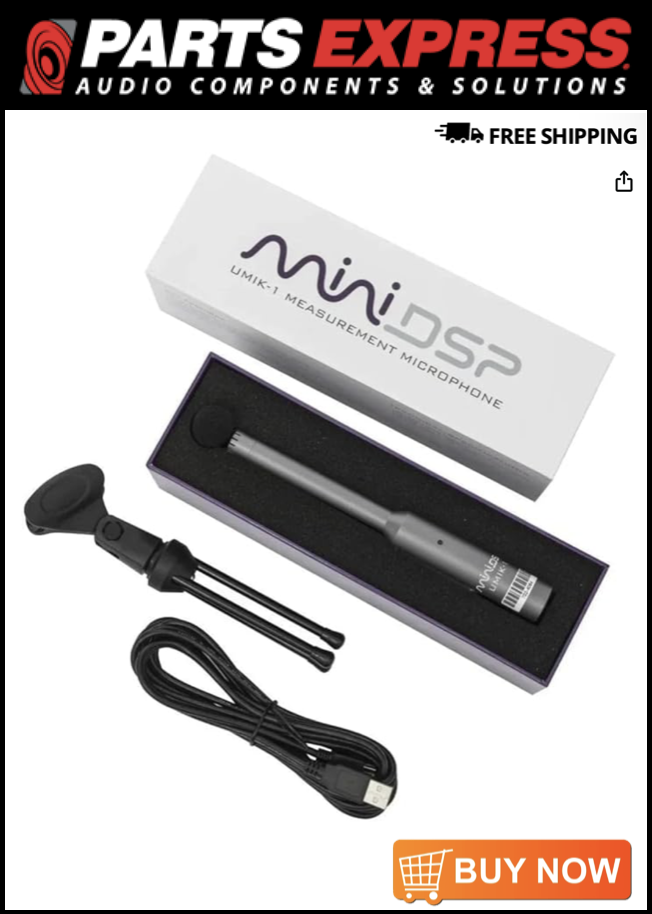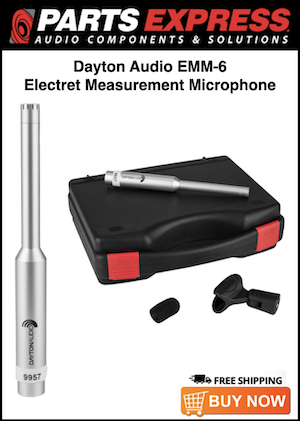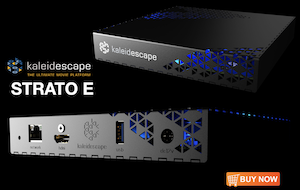LCRLive
New Member
Thread Starter
- Joined
- May 11, 2022
- Posts
- 16
More
- Preamp, Processor or Receiver
- Yamaha MGP16X, DBX Driverack Venue 360
- Main Amp
- Seismic Magnitude Series
Hi I was wondering if anyone may be able to help solve an Acoustical issue for me for a new space I have to listen and monitor in. I'm wishing to get a better handle on perforated helmholtz panel absorbers. But alot of these online calculators including the Acoustical modeling one and the whealy one do not account for the side walls (frame) of the actual perforated panel. Not to mention alot of these results not even matching up a cross the calculators.
So they do have fields for the hole spacing, hole size, absorber thickness and total depth, a field for fiber flow resistivity and a field for the thickness of the front board with the holes in it. (whealy is doing strange things with that one in moving the 'no space green line when sliding the airgap spacing fader around, http://www.whealy.com/acoustics/PA_Calculator/index.html
and Acoustic modeling is doing masive jumps when entering any value after 0mm in the airgap 1 field where it really makes extreme jumps in the resonant frequency Q spike and this is not believable at all and going 0mm to 1mm lowers the resonance frequency but then going ffom 1mm to 2mm highers it so its really doing absurd things ... http://www.acousticmodelling.com/helmholtz.php
Also on these calculators (except for mh-archived website which I will get to below) there are no fields for where the panel's top, bottom and sides end (where is the frame?) to enclose the panel and how far the end comes from the last row of holes. Clearly the tuning of the panel will change if one extended the box whatever distance or if they reduced it to being too close to the hole.
I thought I found a solution at the mh-audio archived website hich seems t have an easier way to come up with a panel enclosure for this but there there is no entry even for the flow resistivity of the fiber, thickness of that fiber in there not the ability to set and airgap distance from the front board/
Does anyone know of any beter tools to accomplish all this in a more accurate way because I have scoured the internet for al sorts of calculators and cant seem to find anything useful out there.
Thanks
So they do have fields for the hole spacing, hole size, absorber thickness and total depth, a field for fiber flow resistivity and a field for the thickness of the front board with the holes in it. (whealy is doing strange things with that one in moving the 'no space green line when sliding the airgap spacing fader around, http://www.whealy.com/acoustics/PA_Calculator/index.html
and Acoustic modeling is doing masive jumps when entering any value after 0mm in the airgap 1 field where it really makes extreme jumps in the resonant frequency Q spike and this is not believable at all and going 0mm to 1mm lowers the resonance frequency but then going ffom 1mm to 2mm highers it so its really doing absurd things ... http://www.acousticmodelling.com/helmholtz.php
Also on these calculators (except for mh-archived website which I will get to below) there are no fields for where the panel's top, bottom and sides end (where is the frame?) to enclose the panel and how far the end comes from the last row of holes. Clearly the tuning of the panel will change if one extended the box whatever distance or if they reduced it to being too close to the hole.
I thought I found a solution at the mh-audio archived website hich seems t have an easier way to come up with a panel enclosure for this but there there is no entry even for the flow resistivity of the fiber, thickness of that fiber in there not the ability to set and airgap distance from the front board/
Does anyone know of any beter tools to accomplish all this in a more accurate way because I have scoured the internet for al sorts of calculators and cant seem to find anything useful out there.
Thanks
Last edited:










